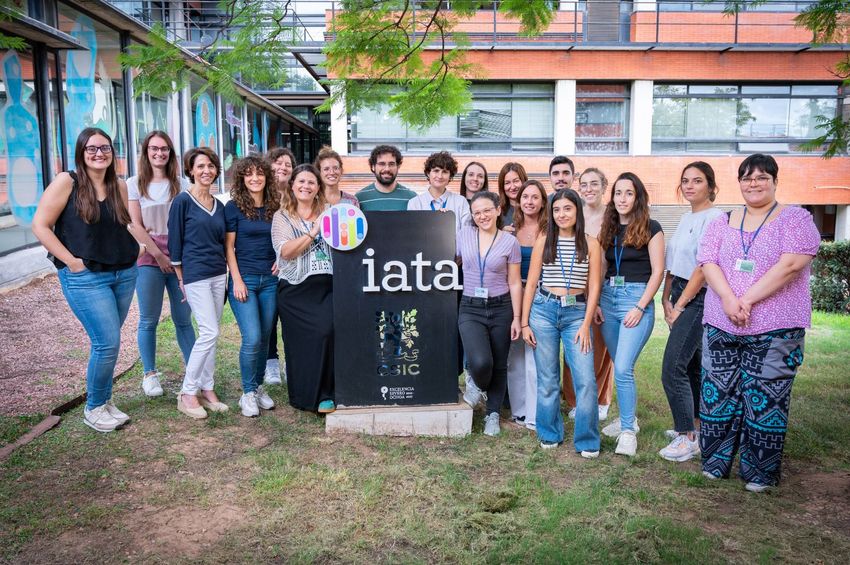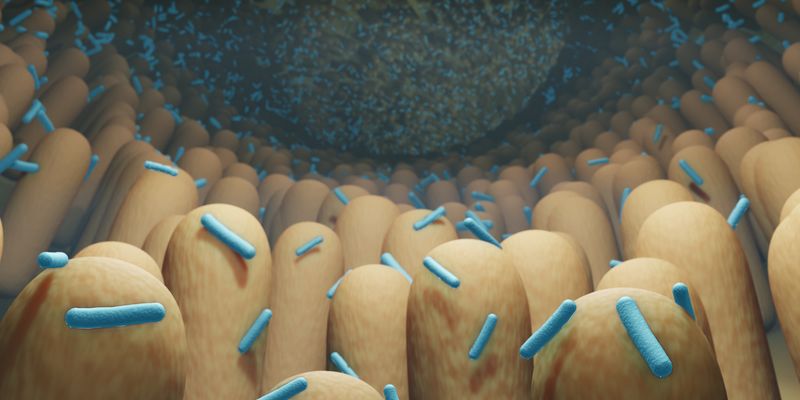The gut bacteria has potential to become a probiotic or postbiotic to treat obesity and metabolic diseases.
Credit: iStock.com/Artur Plawgo
The understudied human gut bacteria P. faecium counteracted weight gain in mice by reducing inflammation, revealing a potential new way to treat obesity.
The human gut serves as an intersection point for many processes — digesting food, absorbing nutrients, supporting immunity, and regulating metabolism — that all interact with a vital and dynamic ecosystem: the gut microbiome.
What the body absorbs depends on how the intestines — and the microbes living there — break down food, said Nicola Segata, a computational microbiologist at the University of Trento. “There is a clear link between our diet and the composition of our gut microbiome,” he said.
Yolanda Sanz first became interested in P. faecium after finding that this bacterium was increased in children with normal weight gain.
Credit: Yolanda Sanz
Researchers have found that changes in the gut microbiome are associated with increased risk of obesity. However, “what is still unclear is which are the main biomarkers or microbiome signatures that consistently are linked with obesity,” said Yolanda Sanz, a microbiologist at the Institute of Agrochemistry and Food Technology, Spanish National Research Council (IATA-CSIC).
In a study published in 2018, Sanz and her colleagues noticed that children who went on to experience excessive weight gain in a four-year period had different microbiomes prior to their weight gain than children who gained a normal amount of weight (1). During this longitudinal study, they found that the bacterial species Phascolarctobacterium faecium was enriched in children with normal weight gains compared to those who gained excessive weight. This microbe “has long been known to be a regular commensal or inhabitant of our gut microbiome, but we didn’t know much about its role, its function, [or] its significance in our gut,” said Ravinder Nagpal, a microbiologist at Florida State University.
To dig deeper into the role of this bacterium in obesity, Sanz, Segata, and their labs turned to 7,529 human metagenomic samples to document what microbes are present in the gut of people with and without obesity (2). In a new study, they reported that P. faecium is associated with non-obesity and that it acted via an innate immune pathway to counteract metabolic changes associated with obesity (3). This microbe could provide a new path to treating obesity.
To determine this bacterial species’ potential role in obesity, the researchers fed mice a high fat and sugar diet, while giving control mice a low fat and sugar diet. Without intervention, mice on the high-fat, high-sugar diet gained more weight than control mice. However, when the researchers treated these mice with P. faecium, it limited the mice’s weight and body fat increases and improved glucose clearance.
Mice on the high-fat, high-sugar diet exhibited an increased amount of pro-inflammatory macrophages in the intestines and had higher levels of intestinal type 1 innate lymphoid cells, which are cells involved in many inflammatory disorders (4). The addition of P. faecium mitigated these changes by boosting the levels of anti-inflammatory macrophages called M2 macrophages and reducing the increase in type 1 innate lymphoid cells. When the team used a small molecule inhibitor to block macrophages from adopting the M2 phenotype, P. faecium’s positive effects disappeared. These results demonstrate that P. faecium’s anti-obesogenic effect occurs by modulating the immune system.
In the future, it’s possible that P. faecium could be developed as a probiotic, said Nagpal, who was not associated with the study. He added that in the mouse model, the microbe “effectively showed promise as a therapeutic or preventative.”

Yolanda Sanz’s research group studies the role of the microbiome in nutrition and health.
Credit: Yolanda Sanz
Beyond probiotics, there’s also potential for this bacterium to act as a postbiotic, which are components released from living or dead microorganisms that have health benefits. The researchers found that both living and pasteurized P. faecium reduced the pro-inflammatory immune response associated with an obesogenic diet. Sanz explained that they still see this effect for pasteurized bacteria possibly because the immune system could be responding to a structural component of P. faecium’s cell wall. Previous work from another team found that the gut commensal Akkermansia muciniphila had an effect on metabolism and obesity whether it was alive or not (5). In particular, since P. faecium is anaerobic, Sanz added that it would be easier to develop it as a postbiotic rather than a probiotic as keeping the bacteria alive during manufacturing is challenging due to oxygen exposure.
Since the bacteria reduce inflammation, Sanz added that P. faecium has potential applications beyond metabolic disorders and in other conditions where inflammation has a role.
“The results are quite promising,” said Sanz. “We hope that, in the end, we can progress towards performing clinical trials and getting evidence from humans.”
References
- Rampelli, S. et al. Pre-obese children’s dysbiotic gut microbiome and unhealthy diets may predict the development of obesity. Commun Biol 1, 222 (2018).
- Pasolli, E. et al. Accessible, curated metagenomic data through ExperimentHub. Nat Methods 14, 1023–1024 (2017).
- Liébana-García, R. et al. Gut commensal Phascolarctobacterium faecium retunes innate immunity to mitigate obesity and metabolic disease in mice. Nat Microbiol 10, 1310-1322 (2025).
- Ebbo, M. et al. Innate lymphoid cells: major players in inflammatory diseases. Nat Rev Immunol 17, 665–678 (2017).
- Plovier, H. et al. A purified membrane protein from Akkermansia muciniphila or the pasteurized bacterium improves metabolism in obese and diabetic mice. Nat Med 23, 107–113 (2017).
